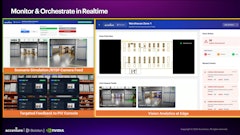
The last year has been a whirlwind for supply chains. In March 2020, reports revealed a drop in demand and companies scrambled to cope. In March 2021, we are now reading of shortages because companies can’t keep up with consumer spending.
The yo-yo effect of the Coronavirus disease (COVID-19) has wreaked havoc on the best-laid plans. It was nearly impossible to predict how demand would shift and what industries would benefit or be affected.
Manufacturing companies need to get better at making data-driven decisions, especially in rapidly changing conditions. Here are a few ideas on how to do that successfully.
What’s your decision-making process?
Before we can even add data to decisions, we first need to figure out how we currently make decisions. Executives can be fantastic at making the right decisions, but cannot explain their process.
Every decision made goes through some process. We try to determine the best outcome, weigh different options and solve any obstacles. Some might label them differently or perhaps add other steps, but the process remains similar.
An effective way to organize the decision-making process is to integrate three steps (outcomes, options and obstacles) into a framework. Call it the “3-0s.” Each step limits what you can do as you work to find the best solution for your situation. Depending on what outcome you want, you will have a limited number of options and relevant obstacles.
Imagine that your team is trying to decide what products to keep in stock ahead of a busy summer season. Your first decision is to determine the exact outcome that you’re looking for. Are you trying to maximize profit? Minimize customer complaints? Sell as much product as possible?
Some obstacles are correlated, while others are independent of each other. You could maximize profits while customer complaints increase.
Next, you want to make a list of all the options available. If the outcome is to maximize profits, then find the combination of the most profitable and popular products. Then prioritize those products in your supply chains and stores.
Finally, make a list of obstacles that could prevent you from achieving these goals. For instance, particular parts may become sticking points in your supply chain. Perhaps you might miss a popular item partly due to its seasonality.
In the end, you have a decision that has gone through checks and balances. The decision has survived a basic critical thinking process.
Whether you use the above framework — or your own — the goal is to expose how you and your team make decisions. Once you know the process, you can better understand where the wrong assumptions typically happen. You can also feel more confident that you aren’t simply making random decisions and hoping that things work out.
Dealing with too much or too little data
Once you have a decision-making process, we can add data to it. There are only three things that can happen here -- too much data, too little data or just enough data.
Remember that data is meant to inform you along your decision-making process. It will not give the right answer, but it will provide clues. Let’s look at the three data scenarios.
Too much data is an ironic outcome. The ease by which we collect data has increased over the years, and now companies can capture an incredible amount of data. The challenge is in knowing what to do with it.
Any of the following strategies can be employed to deal with too much data:
· Pick the three most important points or insights.
· Debate among your team the “what does it mean”
· Look at fewer reports or dashboards
The theme behind all of these strategies is using fewer data. That may sound counterintuitive, but too much data can paralyze you. You try to take in too much and you are therefore unable to act.
Imagine that you’re driving and the car is giving you updates on every single function taking place. You would be completely overwhelmed and unable to drive. Instead, cars give updates when relevant — when fuel is running low or the oil needs changing.
Tackle the data overwhelm by looking for a handful of important points and move on. As you move, you’ll get feedback, and can then adjust. The same happens when you drive and the car gives feedback to slow down or move the steering wheel.
Too little data is the opposite problem. The world was hit with a pandemic of which we knew very little. In these situations, you have to do your best with whatever you have. Companies benefit from leadership teams who can rely on their experience to decide best how to act.
When you have too little data, you still need to move, but you also need to spend more time thinking of potential obstacles and risks. What could go wrong? How do we prevent it or deal with it?
Just enough data is where we all want to be. Things are rarely perfect, and it is common to shift between too much and too little data. Over time, teams will learn the right amount of data for them and how to stay in the “ideal” zone.
Making data-driven decisions is about understanding your process and then adding just the right amount of data.




















